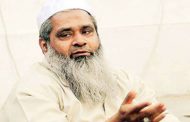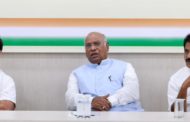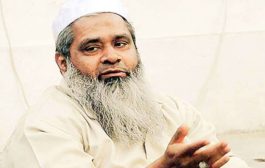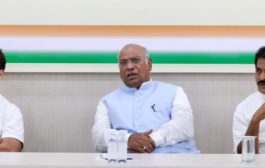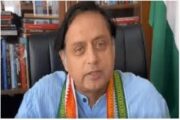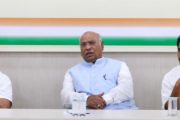In just over 10 weeks we will know what sort of formation will take over the reins of the Central government in Delhi, with the announcement by the Election Commission of India of the schedule for the elections that will determine the shape and form of the 17th Lok Sabha and the declaration of the consequent results.
Several issues will frame the impending election and they will vie for priority. To some extent, the amount of attention these issues receive from voters relative to each other will determine the electoral outcome. And, obviously, each party or political formation will try their damnedest to ensure that the issues that help them transmit their messages get the most attention. So, cutting to the chase, let’s take a look at the salient issues and their relative saliences.
A survey released on Sunday, has predicted that the National Democratic Alliance (NDA) will end up with a tally of 233 seats, while the United Progressive Alliance (UPA) will land 167. It also says that the former could boost this to 278 if it gets the support of parties not aligned with either, while the latter’s tally could go up to 257. Other surveys give the NDA a clearer margin: One, for instance, predicts that it will get 264 seats to the UPA’s 141.
It is pointless at this current juncture to weigh up the relative merits of all surveys because between now and the elections, to be held in seven phases between 11 April and 19 May, much can and will very likely happen, which can cast the current circumstances in a very different mould. The important point has little to do with the figures put out themselves — it is rather the timing of the surveys.
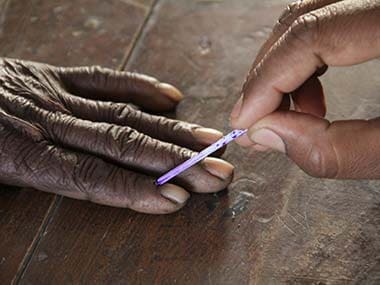
All these surveys capture a period of time either wholly or partly influenced by the terrorist attack on a convoy of the Central Reserve Police Force (CRPF) in Pulwama and the retaliatory air strikes carried out by India on terrorist camps in Pakistan. The most important question, then, is whether this ‘national security’ issue overdetermines everything else. Will, in other words, the security issue swamp all the other ones?
It does appear unlikely at first blush that what is essentially an episodic conflict will cause voters to forget all the other compelling matters and debates that have dominated the political or electoral map for the last few months. You could argue that Indira Gandhi’s Congress (R) swept the 1972 Assembly elections riding the wave of the Bangladesh war of 1971. But it would be wise to remember that that was a full-blown war between two nation-states that led to the creation of a country — Bangladesh. Even the Kargil conflict was a much more intense and significant engagement between two sovereign countries.
The Pulwama-Balakot ‘war’ was, contrariwise, a conflict between terrorists — even if they are proxies for Pakistan — and India. It was punitive action warning terrorists and their patrons to cease and desist. It might not have the same kind of traction, however important it is. In fact, one could well argue that between now and 11 April and certainly into the second half of the month and the one following it, it will lose the intensity of its emotional appeal as voters begin to focus once more on matters closer to their homes. Let us remember that most of the seats will go to the polls between 23 April (the third phase of polling) and 19 May (the seventh and last).
The fates of only 188 seats will be decided on the first two days: 11 and 18 April. And even they are over a month away. This is not to say that emotional appeal of warmongering — often masquerading as patriotism and nationalism — will not sway or influence voters. We have already seen that Prime Minister Narendra Modi’s approval rating has jumped by seven percent. The question is how far this emotion go will go.
Let us look at the context: Unemployment, the travails of the farm sector and the increasing attacks on Dalits and minorities by right-wing groups, aided and abetted by the Bharatiya Janata Party (BJP), have created significant unrest all over the country — especially in the West and the North, which are the bastions of the ruling party and its ideological family. Is it to be believed that distressed farmers will forget their distress, young people without jobs the fact that they are staring down an abyss rather than look up at a future of ‘good times’ and Dalits the tenuousness of their livelihoods and rights?
Doubtful. It is extremely likely that when push comes to shove, voters will take a long, hard look at where they stand in matters of quotidian interest, and who has given them what or is likely to give them what in the next five years. Clearly, the incumbent government has fallen seriously short of the promises it made to the electorate: In brief, that it would usher in a golden age of development. Even though some of the bald growth figures it trots out look impressive, those who are struggling to keep afloat will find in them very cold comfort. It is certainly not unthinkable that bread-and-butter issues will be uppermost in voters’ minds when they reach the polling booth.
Even as people cast their vote, and before that, at least some might also be tempted to ask of themselves questions about why their brethren had to die. Was it not the bounden duty of the government of providing them all protection? There will always be casualties, they might think on sober reflection, but did the government discharge its duties to the best of its abilities? ‘Was it needless death after all?’ they might ask, taking a cue from William Butler Yeats.
Political and electoral matters rarely come pressed and packaged. Many will think about the question of stability. Is it better to put power into the hands of a ragtag alliance, the members of which will squabble among themselves and put the critical project of governance in jeopardy, or is it better to give it to a coherent group or even provide one ‘strong, stable’ party a clear mandate? Circumstantial dynamics will determine that: As, for instance, in 1977, 1989 and 1996.
For the moment, matters are much too inchoate for one to stick a neck out and bandy numbers about; much greater clarity is awaited. Over the next two or three weeks the issues will have come into sharper focus. That will be the time to crunch the numbers.
source: Firstpost.com



